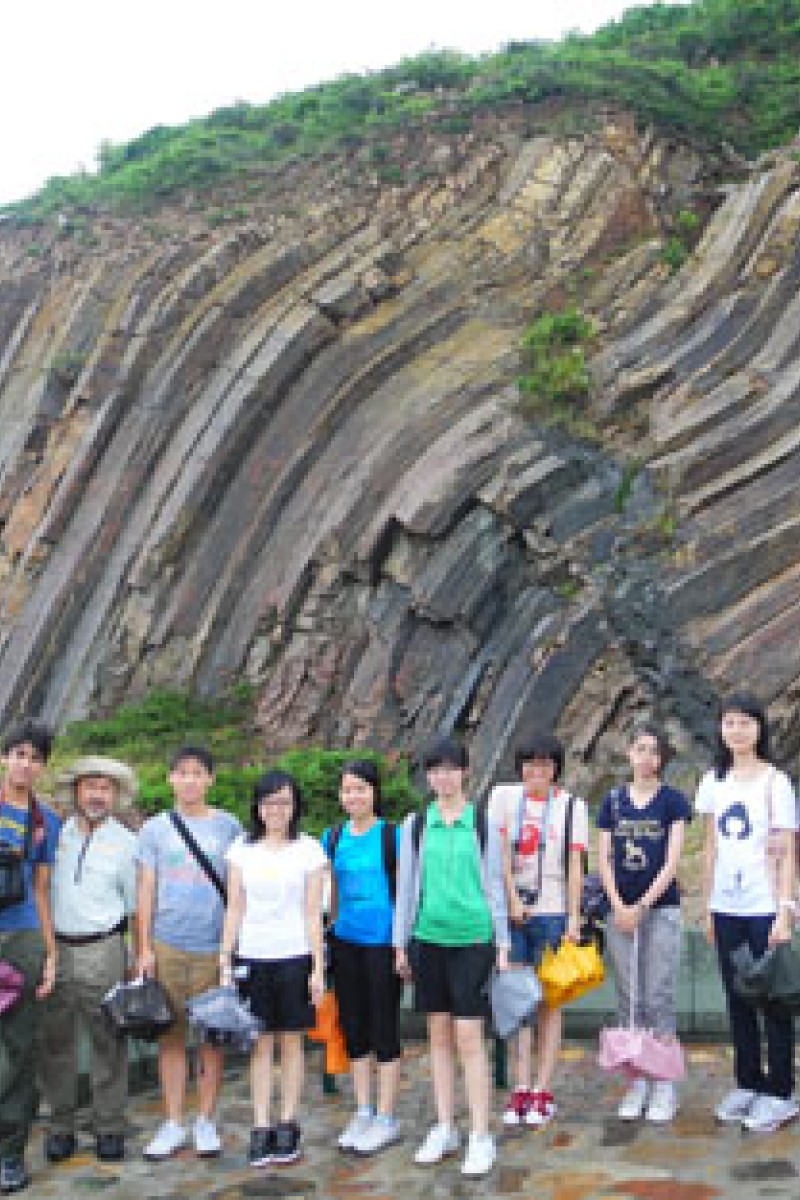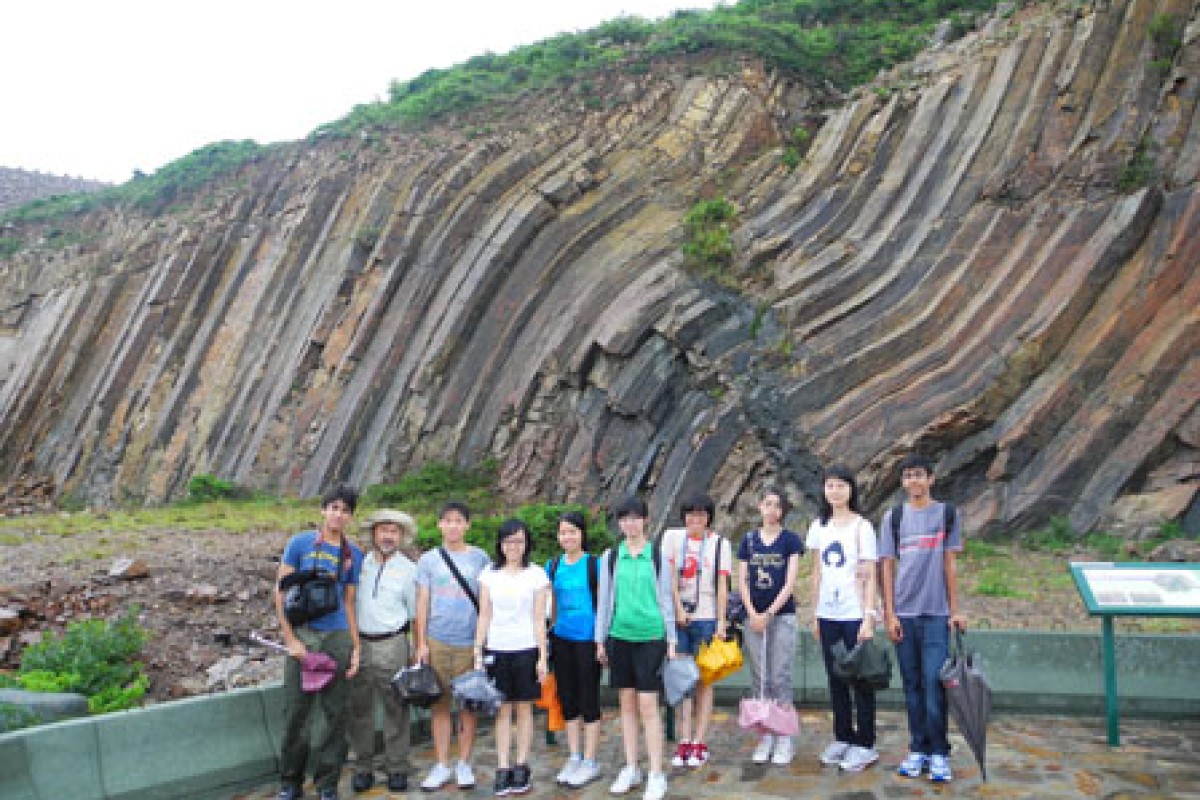
Nine Young Post junior reporters took a guided tour of Hong Kong's unique geological wonders
 A group of junior reporters found themselves marvelling at the treasure trove of geological wonders under the guidance of San Cheung
A group of junior reporters found themselves marvelling at the treasure trove of geological wonders under the guidance of San CheungGuide San Cheung Tit-sang gave nine Young Post junior reporters an exclusive tour, during which he talked about the reservoir's geological history, rocks and landforms. Here the junior reporters share their insights.
Amazingly, in the teeming metropolis of Hong Kong, an ultra-modern way of life coexists peacefully with nature's serene beauty. Almost half - 47 per cent - of the city is marked as national parkland, protecting many geographical heritage sites.
Vigorous volcanic activities shaped Hong Kong's landscape before the age of the dinosaurs. Of the six major types of volcano in the area, the most popular was the ash-cinder volcano, which released lots of magma (melted rock) and ash clouds into the sky.
This explains why we now have many igneous rocks (cooled magma) in our geoparks and other uncultivated lands. Various kinds of rocks - lava rock, volcanic ash tuff, granite and basalt - appeared.
At High Island, some "younger" rocks formed between 165 million and 140 million years ago. The site boasts the world's largest hexagonal columns, lining up along the coast. They are mainly dark grey and pink and more than 100 metres tall.
Cheung directed our attention to folds, faults and unique geologic features. He described such phenomena as weathering, when rocks alter their colour, texture or composition.
Apart from its rock formations, Hong Kong's geology is unique because of the area's long and irregular coastline, which favoured the creation of landforms. These include sea caves, sea arches and stacks. Many of them are on display in Hong Kong Geopark.
Our guide also told us that Unesco may soon recognise the park as a World Nature Heritage site.
Before this tour, all our geological knowledge came from textbooks. This was a golden opportunity to observe rock formations from close up.
We were amazed by the power of nature. The strength of tectonic movements millions of years ago were so strong that they shaped hard rocks into wonderful shapes.
Rocks, we learned, are amazing things. They may look similar, yet they can be very different.
We recommend you follow us and take a geological sightseeing tour. The many trails around Hong Kong await you with their wonders.
YP junior reporters Page Leung, Dorothy Yim, Andy Chu, Leona Chen, Dillon Borges, Arjun Sivakumar, Janet Choi Ho-ching, Sophie Chau and Hollie Chung. Compiled by Joyee Chan.
See more picture from the workshop on our Facebook Page